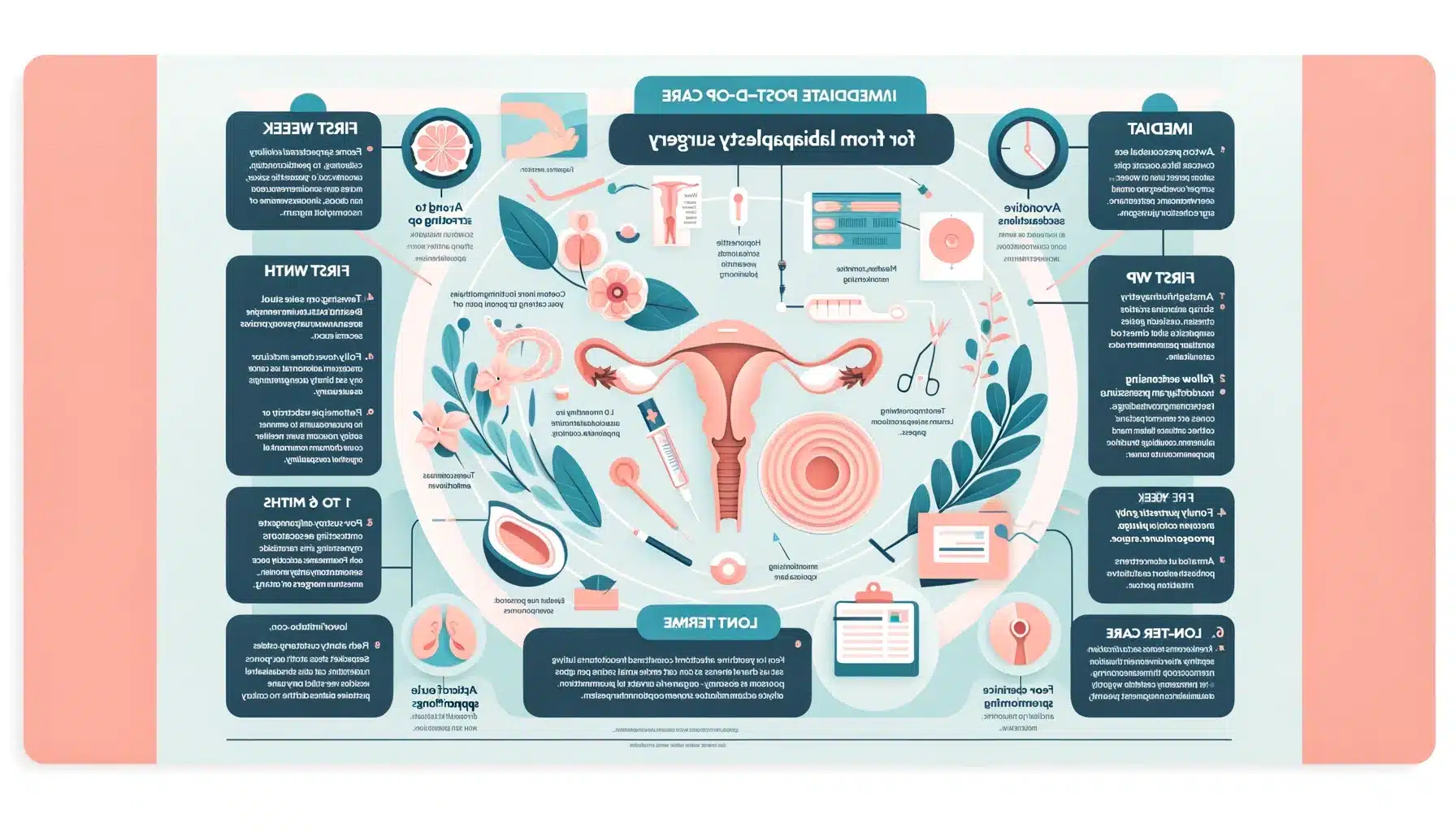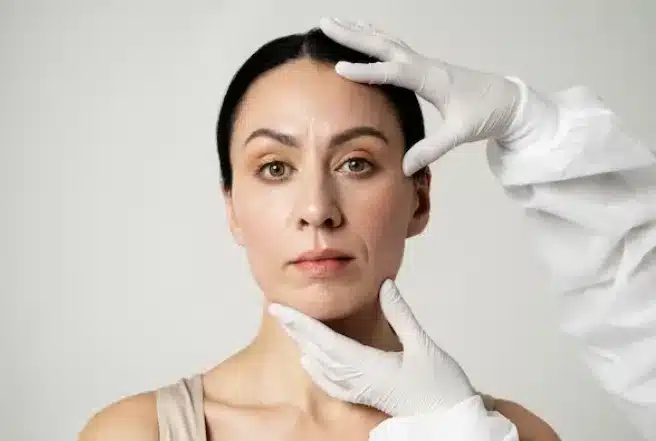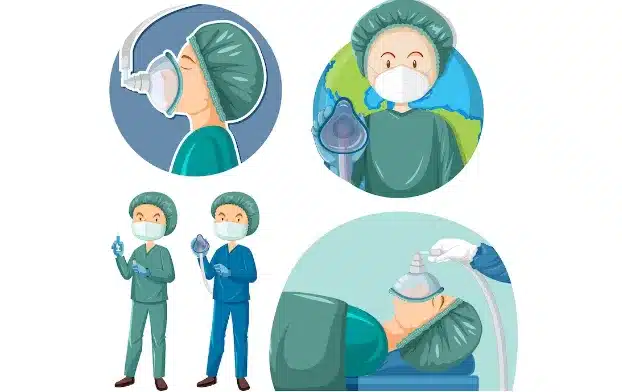Recovering from labiaplasty surgery, a cornerstone procedure in cosmetic gynecology, emphasizes the significance of specialized post-operative care to ensure optimal outcomes. The use of minimally invasive techniques plays a pivotal role in refining the healing process, making it smoother and more comfortable for patients. This tailored approach ensures that individuals receive the highest standard of care, facilitating a quicker return to daily activities while achieving desired aesthetic results.
Why Women Choose Labiaplasty Surgery
Women opt for labiaplasty for a variety of reasons. While personal motivations can vary greatly, some common reasons include:
- Cosmetic Concerns: Many women are dissatisfied with the appearance of their labia and desire a more symmetrical or proportionate genital area. Labiaplasty can help achieve the desired aesthetic outcome, boosting self-esteem and body confidence.
- Discomfort and Irritation: Enlarged or elongated labia can cause physical discomfort during various activities, such as exercise, sexual intercourse, or wearing tight clothing. Labiaplasty can reduce the size of the labia, thereby alleviating discomfort and irritation.
- Hygiene Concerns: Excessively long labia may lead to difficulty maintaining proper hygiene, making women more susceptible to infections. Labiaplasty can address these concerns by reducing the size of the labia, allowing for improved hygiene practices.
- Psychological and Emotional Well-being: Some women experience significant psychological distress or embarrassment due to the appearance of their labia, which can impact their overall well-being. Labiaplasty can help alleviate these emotional concerns, promoting a positive body image and enhanced psychological well-being.
Recovery Time for Labiaplasty
The recovery time for labiaplasty varies depending on several factors, including the individual’s overall health, the extent of the procedure, and adherence to post-operative care instructions. Generally, it takes about 4 to 6 weeks for most of the healing to occur. However, it is essential to note that every individual heals at their own pace, and the complete recovery process may extend beyond this time frame.
Recovery from Labiaplasty
Recovery from labiaplasty, like any surgical procedure, varies from person to person. However, here’s a general overview:
Labiaplasty is a surgical procedure that involves altering the size or shape of the labia minora or majora, which are the folds of skin surrounding the vaginal opening. It is performed to address various concerns, including discomfort, aesthetic dissatisfaction, and functional limitations.
The decision to undergo labiaplasty is highly personal and should be made after careful consideration and consultation with a qualified healthcare professional.
What to Expect
Recovery from labiaplasty involves several stages, and following your surgeon’s post-operative care guidelines is crucial. The following timeline provides a general overview of the recovery process:
Immediately after Surgery
After the procedure, you will likely experience swelling, bruising, and discomfort in the treated area. Your surgeon may provide pain medication or suggest over-the-counter pain relievers to manage discomfort.

First Week
During this period, it is essential to rest and avoid strenuous activities. Ice packs can be applied to the area to reduce swelling. Wearing loose-fitting clothing and cotton underwear can help minimize friction and irritation.
Two Weeks
Swelling and bruising should gradually subside, and you may start to feel more comfortable. Your surgeon may advise avoiding sexual intercourse, tampon use, and vigorous exercise during this time.
Three to Four Weeks
Most swelling should have resolved by this stage, and the incision sites should be healing. You may be able to resume light physical activities, but it is crucial to follow your surgeon’s instructions regarding exercise and sexual activity.

Six Weeks and Beyond: At this point, you should notice a significant improvement in your recovery. However, it is essential to remember that individual healing times can vary, and the final results may take several months to manifest fully.
Tips for Promoting Faster Recovery
While the Recovery from Labiaplasty largely depends on your body’s natural healing abilities, there are several measures you can take to support a smoother and faster recovery:
- Follow Post-Operative Care Instructions: Recovery from Labiaplasty Adhere strictly to the instructions provided by your surgeon, including wound care, medication usage, and activity restrictions. These guidelines are specifically tailored to optimize your recovery process.
- Maintain Good Hygiene: for Recovery from Labiaplasty, Keeping the surgical area clean and dry is essential to prevent infection. Follow your surgeon’s instructions for cleaning the area and avoid using harsh soaps or other irritants.
- Apply Ice Packs: Ice packs can help reduce swelling and relieve pain in the initial days following surgery. As your surgeon recommends, gently apply them to the surgical area for short durations.
- Wear Loose and Breathable Clothing: For faster Recovery from Labiaplasty, Choose loose-fitting clothing made from soft, breathable fabrics to minimize friction and promote healing. Avoid tight undergarments that could irritate the surgical area.
- Avoid Strenuous Activities: During the initial recovery period, avoiding activities that may strain or stretch the surgical area is crucial. Follow your surgeon’s advice on when it is safe to resume exercise and sexual intercourse.
- Eat a Balanced Diet: for faster recovery from Labiaplasty, Proper nutrition plays a vital role in the healing process. Maintain a well-balanced diet rich in vitamins, minerals, and protein to support optimal recovery.
- Stay Hydrated: Drinking an adequate amount of water promotes overall health and aids in the healing process. Stay hydrated to support your body’s recovery mechanisms.
Most people who have labiaplasty are between the ages of 18 and 50. But, since your labia may stretch during pregnancy and childbirth, you might want to wait until after you’re done adding to your family.Cleveland Clinic
Christine Hamori on Labiaplasty Recovery
The recovery from labiaplasty surgery, a procedure aimed at reshaping or reducing the size of the labia minora and/or labia majora for both aesthetic and functional reasons, has been a focal point of research for several leading institutions and professionals within the field of cosmetic and reconstructive gynecology.
Notably, the Johns Hopkins University School of Medicine and its associated hospital have been at the forefront of advancing techniques and post-operative care protocols. Esteemed professionals like Dr. Christine Hamori, who specializes in female genital aesthetic surgery, have contributed significantly to the body of knowledge surrounding the recovery process, emphasizing the importance of minimally invasive techniques to reduce recovery time and improve outcomes.
In terms of active engagement within this specialty, the Cosmetic Gynecology Surgery Suite in New York has emerged as a leading entity, known for its innovative approaches to labiaplasty and post-surgical care. Recent statistics indicate that the demand for labiaplasty has seen a significant increase, with the American Society of Plastic Surgeons reporting a 39% increase in the number of procedures performed from 2016 to 2017 alone.
This uptick underscores the growing acceptance and pursuit of the procedure among women seeking relief from discomfort, enhanced cosmetic appearance, or both. With advancements in surgical techniques, including laser and radiofrequency applications, patients now experience shorter recovery times, typically ranging from 1 to 2 weeks for the initial healing phase, though full recovery and the complete resolution of swelling and sensitivity can take up to 6 months.
The emphasis on post-operative care, including cold compresses, sitz baths, and avoidance of strenuous activities, is crucial for a smooth recovery process.

Summary
The recovery process from labiaplasty surgery is a testament to the advancements within cosmetic gynecology, emphasizing the importance of post-operative care and the utilization of minimally invasive techniques. These approaches significantly streamline the healing process, allowing patients to experience less discomfort and a quicker return to their daily routines.
The focus on gentle methods not only minimizes physical trauma but also optimizes the aesthetic and functional outcomes of the surgery. As such, patients are guided through a recovery journey that is both efficient and conducive to the best possible results, underlining the evolution of patient care in cosmetic procedures.
Moreover, the emphasis on a meticulous post-operative regimen underscores the commitment to ensuring a smooth and effective recovery. This includes close monitoring by healthcare professionals, adherence to post-surgery instructions, and a gradual resumption of activities to avoid any complications.
The outcome of this detailed and patient-centric approach is a higher level of satisfaction with the surgical results, coupled with an overall enhancement in quality of life. Thus, the recovery from labiaplasty surgery, bolstered by advanced techniques and a comprehensive care plan, exemplifies the strides made in cosmetic gynecology, offering patients not just a transformation in physical appearance but also a positive and empowering experience.
Fun fact: Did you know that the recovery journey from labiaplasty isn’t just about the physical timeline? While many focus on post-op labiaplasty care and the direct steps to healing, an intricate tapestry surrounds the procedure. There’s much to uncover from understanding the diverse reasons for labiaplasty – from cosmetic choices to pure comfort – to comparing different surgical techniques.
Additionally, although rare, potential complications are crucial for patients to be aware of. Beyond the physical, emotional recovery is a chapter weaving together facets of self-esteem, relationship dynamics, and societal perceptions. It’s truly a holistic journey!
FAQs
1. Is labiaplasty painful?
Labiaplasty is performed under anesthesia, ensuring a pain-free procedure. Post-operative discomfort can be managed with medication.
2. When can I return to work after labiaplasty?
The timing depends on the extent of the surgery and your job. Most can resume sedentary work within a week or two.
3. What are the reasons for undergoing labiaplasty?
Reasons for undergoing labiaplasty may include discomfort or irritation caused by enlarged or asymmetrical labia, self-consciousness about the appearance of the genital area, difficulty with hygiene or clothing fit due to prominent labia, or dissatisfaction with the appearance during sexual activity.
4. How is labiaplasty performed?
Labiaplasty can be performed using various techniques, including trim, wedge, or composite methods. The chosen technique depends on the individual’s anatomy and desired outcomes. Generally, excess tissue is removed from the labia minora, and the edges are carefully reshaped to achieve the desired appearance.
5. What is the recovery process like?
Recovery from labiaplasty typically involves initial discomfort, swelling, and bruising, which gradually subside over a few weeks. Patients are advised to rest, avoid strenuous activities, and refrain from sexual intercourse during the initial recovery period. Full recovery can take several months, during which scar tissue continues to mature.
https://my.clevelandclinic.org/health/treatments/21953-labiaplasty



